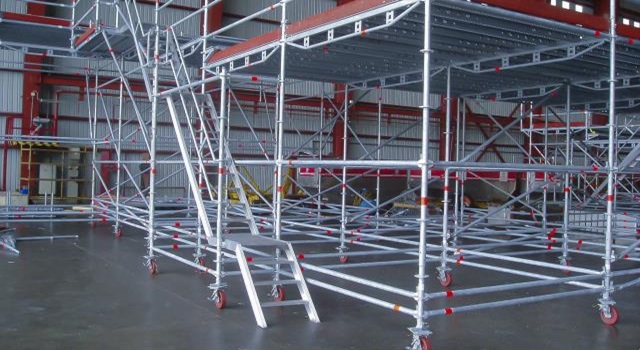LAYHER IMPROVES SAFETY AND
PRODUCTIVITY IN CHEMICAL PLANTS
LAYHER IMPROVES SAFETY AND
PRODUCTIVITY IN CHEMICAL PLANTS
Layher Allround® Scaffolding is the preferred choice of scaffolding in Chemical plants, standing out with its ability to be assembled quickly and adapt to any building condition, combined with its innovative, out-of-the-box solutions that are all metal-based and reduce the need for custom build and consumables. The following are a few examples of how we do it.
THE FUTURE OF SCAFFOLDING IN THE CHEMICAL PLANT INDUSTRY IS DIGITAL — AND ITS NAME IS SIM
SIM or Scaffolding Information Modeling is a scaffolding design process based on 3D models. At Layher, we use it to meet the precise requirements of industrial scaffolding, including those used in chemical plants. SIM helps us to plan, assemble, and strategically manage temporary scaffolding structures in the most efficient ways possible.
SIM allows you to:
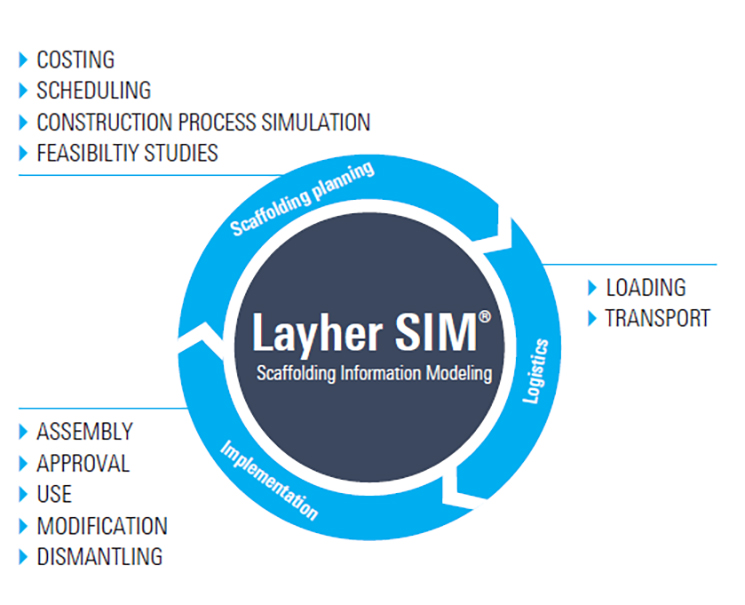
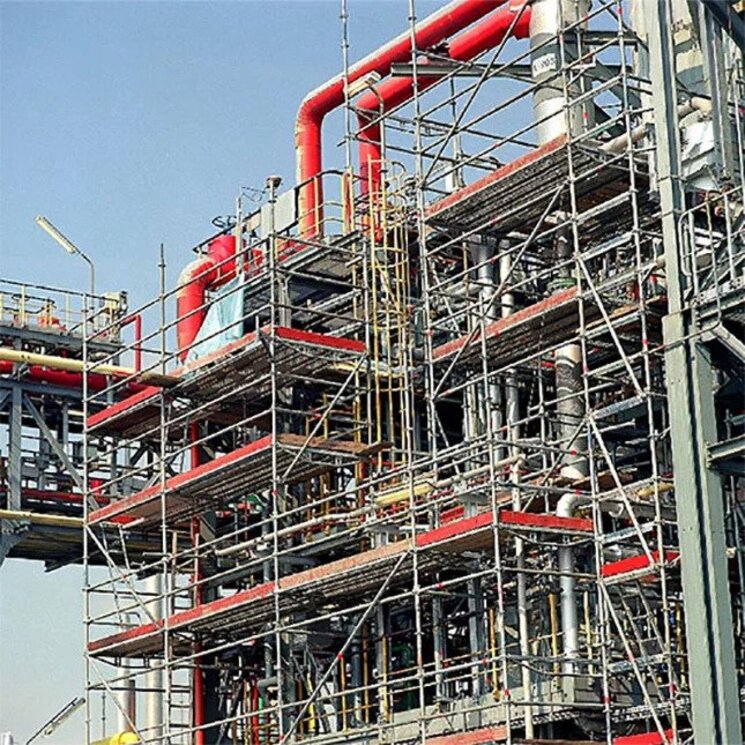
SIMPLE, VERSATILE, EASY-TO-HANDLE, SAFER, ADAPTABLE, AND TRANSPORTABLE
These are just some of the adjectives our loyal clients in the Chemical Plant Industry have used to describe our scaffolding. They depict our world-class products and also indicate why our clients keep coming back. They continue to deploy scaffolding from Layher as we continue to improve an already world-class product.
LAYHER ALLROUND® SCAFFOLDING
Essential for Chemical Plant Scaffolding
Perhaps the focus of your project is on pipe and valve access, heat exchangers, chemical scrubbers, water towers, furnaces, or general plant maintenance. Irrespective of what it is, Layher will not disappoint.
Layher’s Allround Scaffolding is essential and provides:
Our Allround system also has a wide variety of accessories which provide many solutions straight out of the box quite literally. With over 4000 different parts in stock and 15,000 on drawing, Layher has the right solution for almost any chemical plant dilemma.
LAYHER TRAINING & ON-SITE SUPPORT
On-site, In-house, and Remote Training Options
We offer all of our chemical plant industry clients scaffold training on-site. The training can be tailored to their specific needs. Our industry and product-specific training courses can be provided either on-site, in-house, or remotely via our qualified trainers. The training will address the dual objectives of safety and continuous improvement within the demanding chemical plant industry. Our practice is structured to match all levels of expertise. The courses cover a variety of topics from correct scaffolding installation to highlighting the benefits that can arise from the use of authentic Layher equipment.
We offer a variety of classes, both theoretical and hands-on in approach. The training will be tailored to the specific needs of the project. Each course has a duration of one to several days. For personalized attention, the classes are small, with no more than nine trainees per class.
Layher On-Site support provides an extra resource for your most critical projects. Our experts will be there to answer your questions and ensure that your chemical plant project is progressing as planned. Layher engineers often work together with field supervisors to ensure effective logistics planning, including transportation and loading. They provide straight-forward communication between trades and a reduction in change orders.
YOUR SUCCESS IS OUR PRIORITY
Increased Profits, Improved Safety, Developed Efficiency
LAYHER-THE WORLD-LEADER IN SCAFFOLDING
You could say we’ve been doing the same old thing for the last 75 years: revolutionizing the scaffolding industry with our simple yet revolutionary design. You might wonder why we keep doing it? The answer is simple. It’s for the customer. It’s always been for the customer. We want our customers to succeed. Our products are the result of superior engineering, a quality product, and the combined experience of our team. Together we produce world-class scaffolding and continue to work towards improving that product on a daily basis. Should you have any questions regarding how Layher can help your project, please do not hesitate to contact us.
SCAFFOLD SYSTEM SOLUTIONS
SAFER AND FLAT WORK PLATFORMS – OPTIMISED FOR THE JOB TO BE DONE
Since no plant is like another, scaffolding systems have to be flexible and adaptable. With Layher scaffolding, that’s no problem: Thanks to the option of laying the decks over the rosettes, a gap-free solution can be accomplished without additional expense or effort. For special cases specific to the site, we offer a comprehensive portfolio of expansion parts for achieving completely closed work surfaces within the system.
Solution-oriented components
- Special decks
- Penetrations with interchangeable ledgers
- Telescoping scaffolding decks
- Gap deck
- Steel gap cover
- Steel plank
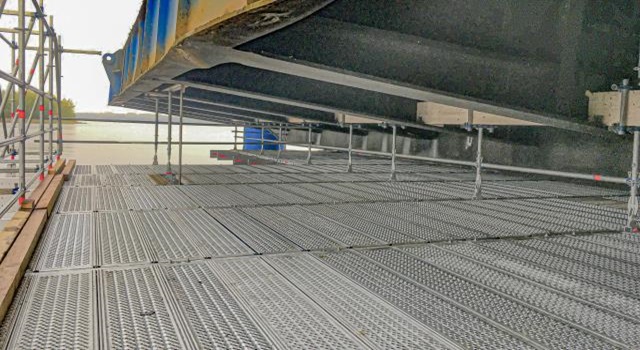
ACCESS
Well-designed and correctly arranged accesses improve efficiency and also productivity at the site.
Solution-oriented components
- Internal ladder access
- Platform stairs
- Stairtowers 200
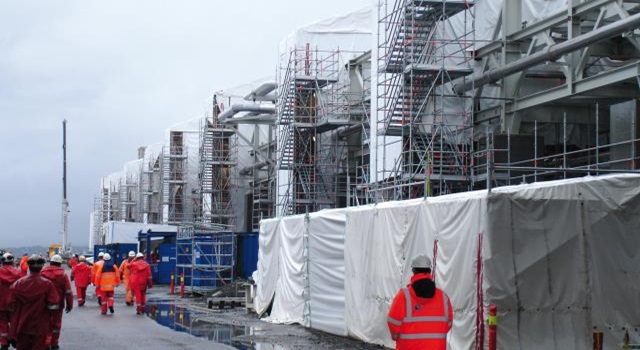
ROOFS & WALL SYSTEMS
The extensive Layher range of protective systems extends from compact weather protection roofs to wide-span roof solutions and enclosure systems which can be kept at a lower pressure.
Solution-oriented components
- Roof Systems
- Wall systems
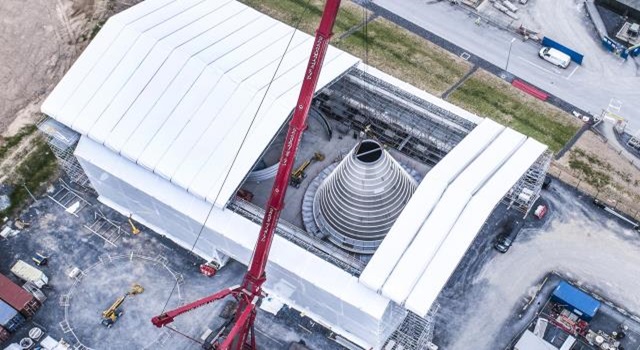
SHORING
Shoring structures are an important factor in ensuring more safety and efficiency for in-situ concreting work, particularly when building a new plant.
Solution-oriented components
- New plant construction with Allround Scaffolding
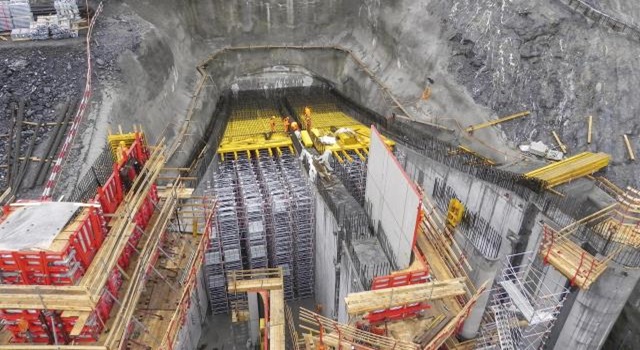
VESSELS
Closing the gaps in round equipment is often a challenge. Covering with steel or wood planks can be classified as a risk of tripping. In addition, these must be protected against unintentional lifting and slipping, which can cause problems depending on the type of soil used.
Solution-oriented components
- Flexible angle selection of Allround rosette
- Work surface adaptation for circular scaffolding
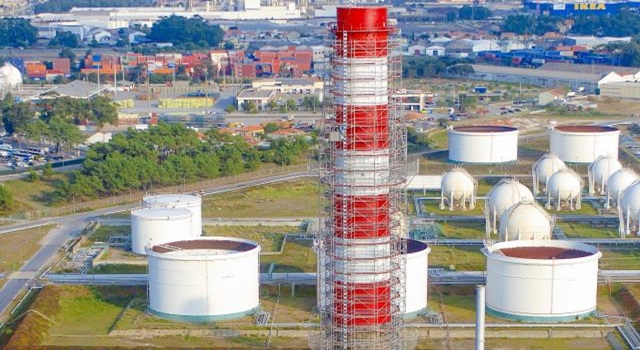
SUSPENDED SCAFFOLDING SOLUTIONS
When the work areas are very high up, standard scaffolding structures can often be uneconomical due to high material and labour costs. With Allround Scaffolding, suspended solutions can be achieved without any problem in such cases. Pull-resistant securing of the standards with hinged pins or by bolting them together allows forces to be optimally transmitted.
Solution-oriented components
- Suspended scaffolding structures
- Suspended scaffolding accessories
- Cantilevering and crane movability
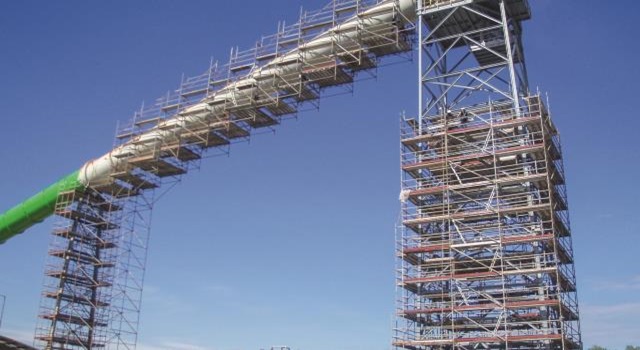
Layher Suspended Scaffolding Solutions
CRANE MOVABILITY
The high fitting precision in the Layher system enables scaffolding structures to be preassembled on the ground, complete or in individual segments. Thanks to pull-resistant connection of all individual parts, they can be moved quickly and easily into position using a crane. This is a major advantage when it comes to efficiency and profitability. At the same time, safety during assembly increases many times over. Because the best fall protection is when there is no risk of falls in the first place.
Solution-oriented components
- Stairtowers
- Work Scaffolding
- Bridging
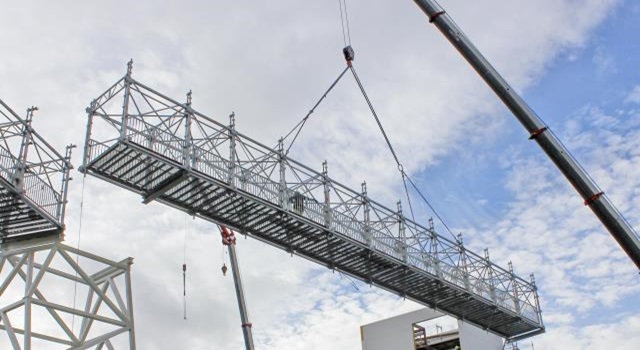
BRIDGING
Small spans are possible with Allround Scaffolding without the use of additional components, using standards, ledgers, and diagonal braces as a lattice structure.
Solution-oriented components
- Allround Scaffolding standard parts
- Lattice beams
- Aluminum FlexBeam
- Allround Bridging System
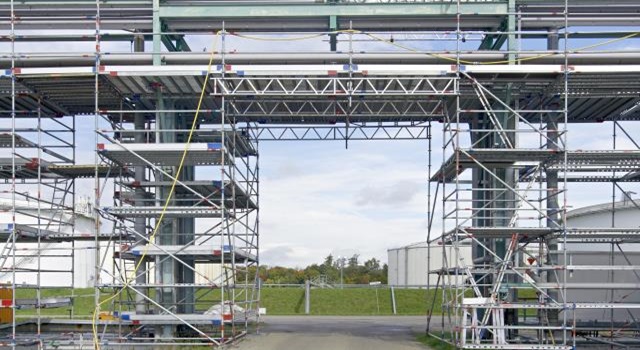
FIRE SAFETY, WOOD-FREE SOLUTIONS
Reduction of the fire risk is a requirement frequently expressed for scaffolding in refineries, chemical factories, and other fire-sensitive industrial plants. Components made of wood can be ruled out for obvious reasons. Layher has the optimum alternatives: system decks and matching toe boards made of steel or aluminum. Gap solutions made of steel, and scaffolding coverings made of low-inflammability tarpaulins or the Protect System, round off the range.
Solution-oriented components
- Steel deck LW
- Toeboards of steel and aluminum
- Steel plank
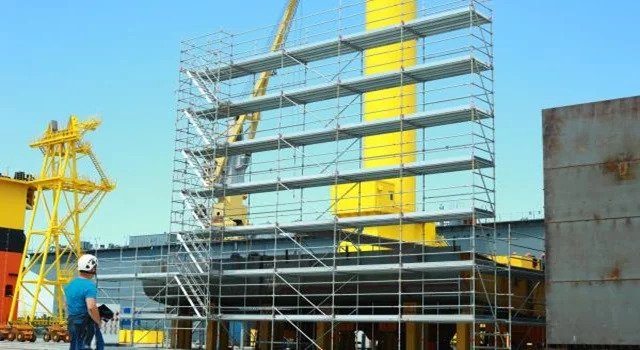
SCAFFOLD SYSTEM SOLUTIONS

SAFER AND FLAT WORK PLATFORMS – OPTIMISED FOR THE JOB TO BE DONE
Since no plant is like another, scaffolding systems have to be flexible and adaptable. With Layher scaffolding, that’s no problem: Thanks to the option of laying the decks over the rosettes, a gap-free solution can be accomplished without additional expense or effort. For special cases specific to the site, we offer a comprehensive portfolio of expansion parts for achieving completely closed work surfaces within the system.
Solution-oriented components
- Special decks
- Penetrations with interchangeable ledgers
- Telescoping scaffolding decks
- Gap deck
- Steel gap cover
- Steel plank




VESSELS
Closing the gaps in round equipment is often a challenge. Covering with steel or wood planks can be classified as a risk of tripping. In addition, these must be protected against unintentional lifting and slipping, which can cause problems depending on the type of soil used.
Solution-oriented components
- Flexible angle selection of Allround rosette
- Work surface adaptation for circular scaffolding

Layher Suspended Scaffolding Solutions
SUSPENDED SCAFFOLDING SOLUTIONS
When the work areas are very high up, standard scaffolding structures can often be uneconomical due to high material and labour costs. With Allround Scaffolding, suspended solutions can be achieved without any problem in such cases. Pull-resistant securing of the standards with hinged pins or by bolting them together allows forces to be optimally transmitted.
Solution-oriented components
- Suspended scaffolding structures
- Suspended scaffolding accessories
- Cantilevering and crane movability

CRANE MOVABILITY
The high fitting precision in the Layher system enables scaffolding structures to be preassembled on the ground, complete or in individual segments. Thanks to pull-resistant connection of all individual parts, they can be moved quickly and easily into position using a crane. This is a major advantage when it comes to efficiency and profitability. At the same time, safety during assembly increases many times over. Because the best fall protection is when there is no risk of falls in the first place.
Solution-oriented components
- Stairtowers
- Work Scaffolding
- Bridging


FIRE SAFETY, WOOD-FREE SOLUTIONS
Reduction of the fire risk is a requirement frequently expressed for scaffolding in refineries, chemical factories, and other fire-sensitive industrial plants. Components made of wood can be ruled out for obvious reasons. Layher has the optimum alternatives: system decks and matching toe boards made of steel or aluminum. Gap solutions made of steel, and scaffolding coverings made of low-inflammability tarpaulins or the Protect System, round off the range.
Solution-oriented components
- Steel deck LW
- Toeboards of steel and aluminum
- Steel plank
LAYHER, YOUR PARTNER IN SUCCESS
Questions regarding how Layher can help your project, please do not hesitate to contact us.

